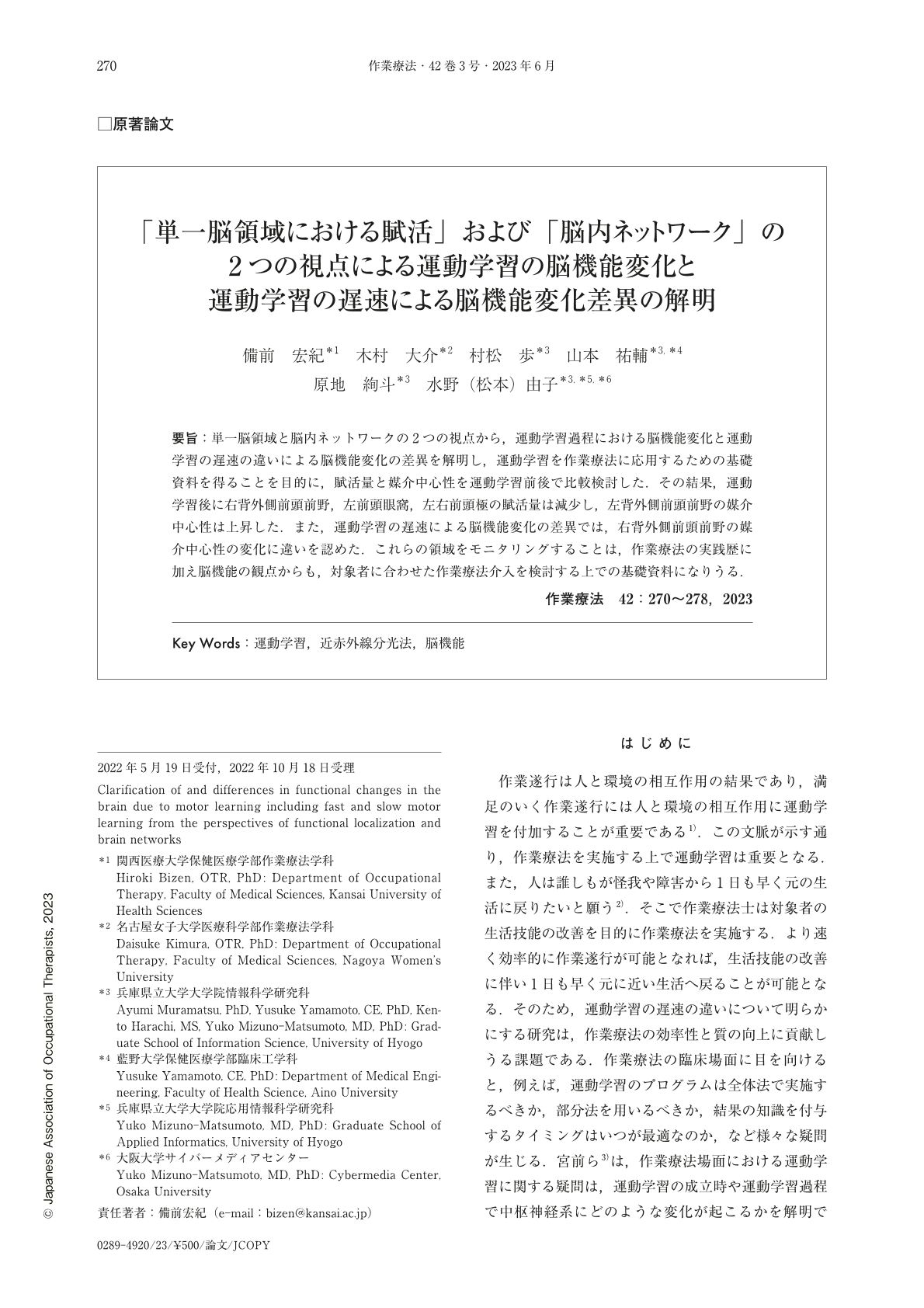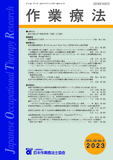Japanese
English
- 販売していません
- Abstract 文献概要
- 1ページ目 Look Inside
- 参考文献 Reference
要旨:単一脳領域と脳内ネットワークの2つの視点から,運動学習過程における脳機能変化と運動学習の遅速の違いによる脳機能変化の差異を解明し,運動学習を作業療法に応用するための基礎資料を得ることを目的に,賦活量と媒介中心性を運動学習前後で比較検討した.その結果,運動学習後に右背外側前頭前野,左前頭眼窩,左右前頭極の賦活量は減少し,左背外側前頭前野の媒介中心性は上昇した.また,運動学習の遅速による脳機能変化の差異では,右背外側前頭前野の媒介中心性の変化に違いを認めた.これらの領域をモニタリングすることは,作業療法の実践歴に加え脳機能の観点からも,対象者に合わせた作業療法介入を検討する上での基礎資料になりうる.
This study aimed to elucidate the brain changes during motor learning progression and to identify the differences in brain changes between people with early and late motor learning progression. A total of 20 healthy individuals underwent near-infrared spectroscopy measurements during a serial reaction time task before and after motor learning, and the amount of activation and betweenness centrality in brain regions were compared before and after the task by two-way ANOVA with a generalized linear mixed model. The results showed that activation in the right dorsolateral prefrontal cortex, left orbitofrontal cortex, and left and right frontal poles decreased after motor learning, while the betweenness centrality of the left dorsolateral prefrontal cortex increased after motor learning. The difference in motor learning between fast and slow learners was characterized by a reduction in the betweenness centrality of the right dorsolateral prefrontal cortex in the fast learners and its increase in slow learners. Monitoring these areas may provide basic data to assist occupational therapists in selecting the optimal method of motor learning for each subject from the perspective of brain function practice that has been tailored to the subjects.

Copyright © 2023, Japanese Association of Occupational Therapists. All rights reserved.


